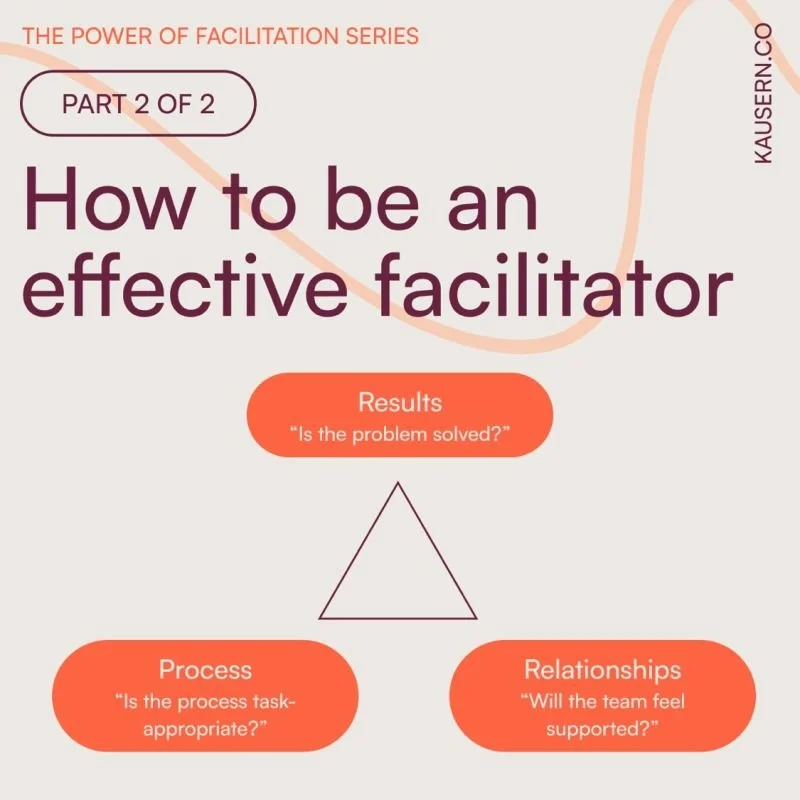Part 2: How to be an effective facilitator
📌 “The new leader is a facilitator, not an order giver.” – John Naisbitt
In last week’s post, I elaborated what facilitation is and why it is important. This week, let’s discuss the mindset and skills required to be an effective facilitator.
Facilitation is collaboration, and the success in collaborative efforts is a multi-dimensional affair not solely defined by results. When a leader puts on their facilitation hat, they should do so with the mindset of balancing these three dimensions (see image):
✅ Results (goal or task accomplished)
✅ Process (the way in which work is carried out)
✅ Relationships (the quality of the connections between the people engaged in the task)
Here are 10 essential facilitations skills arranged according to the acronym FACILITATE
1. Flexibility
The magic of facilitation often presents itself in how well we adapt to what’s happening in the room. Be ready to modify your approach in line with the changing needs of the group.
2. Active Listening
Be fully present and aware of what others are saying (both verbally and non-verbally) and not saying i.e. the underlying emotions that may be driving what is being said.
3. Communicate Effectively
Be clear and concise in your communication, as well as using language that everyone in the group can understand.
4. Identify Group Dynamics
Be aware of the group’s energy level, the relationships between people in the group, and any patterns of behaviour that may emerge. Identify when there may be conflict brewing and intervene appropriately.
5. Lead
In a deadlock situation, be bold and take the lead to provide your perspective. Remember to seek permission first.
6. Impartiality
Remain impartial. Don’t have a predetermined outcome that you want the group to reach. That’s not facilitation, that’s manipulation!
7. Time Management
Always keep the group on track. Know when to move on to the next item on the agenda. Be aware of how much time is available and use it wisely.
8. Alignment and Action Steps
Review the decision. Cross check it with objectives. Ensure everyone is on the same page. Then, develop an action plan to make the decision come to life.
9. Trust Building
Create a comfortable environment where everyone feels safe participating. Be respectful of everyone in the group, set clear boundaries and expectations, and provide adequate support.
10. Encourage Participation
Encourage participation and ensure everyone has a chance to participate, regardless of their level of experience or expertise.
Facilitation is a skill I strongly urge every leader to actively practise. By cultivating this mindset and skillset, not only will you become a more experienced facilitator but also a stronger leader, capable of inspiring, guiding, and empowering your team toward achieving the common goals.

